We all know the importance of small group instruction in upper elementary classrooms, where there can be a wide range of reading abilities and diverse needs. Often, the only way to really address these differences is through small group instruction. However, it can be difficult to fit small groups into your existing schedule, especially if your time is limited. This post offers ideas and tips to help you figure out how you can schedule time for small group reading instruction, no matter if you have 45 minutes or are one of the lucky ones with 90 minutes for reading instruction.
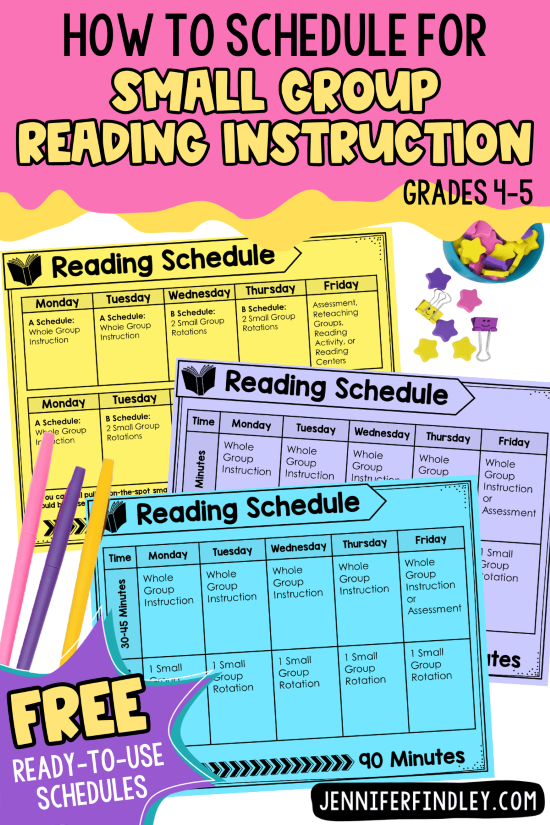
Grouping Types
First, there are three main ways that you can fit small groups into your schedule. The combination you choose will greatly depend on your specific timeframe (which we will dive into in the next section). The three ways are:
- Whole Group + On the Spot Groups
- Whole Group + Scheduled Group Rotations on the Same Day
- A/B Days (or Whole Group Days + Small Group Days)
Let’s look at each of those more closely.
Grouping #1 – Whole Group + On the Spot Small Groups
The first grouping is where you are pulling a group of students while the rest of your class is working on independent practice that is an extension of your whole group lesson.
For this type of grouping, you are pulling a group of students that you know, on the spot, need help with the whole group reading skill. You can determine this from your anecdotal notes, knowing which students are probably going to need help based on past performance, your questioning techniques that you use during whole group lessons, or some type of exit slip that you are able to quickly give students (and check).
For these small groups, you would be typically working on the same skill that you are currently teaching.
This can look like:
- working on the same independent practice (with your support) that the rest of your class is working on
- working on the same skill, but with a different text (a lower-level text or a shorter text)
This type of grouping is extremely flexible and adaptive to your needs on the given day. The group can be as long or short as the time you have left in your instruction. You can be working with 2 students or 6 students. The whole point of this type of grouping is to meet the immediate needs of your students on the spot with whatever time you have available.
You could also be working on something completely different from your whole group skill. For example, if you do not need to pull any skills groups during this time, you could be instead working on decoding skills or other reading gaps with specific students.
Grouping #2 – Whole Group + Scheduled Group Rotations on the Same Day
The second type of grouping is when you actually schedule small groups into your schedule and specific activities for the other students to do while you are pulling groups.
In this instance, you are actually scheduling your groups ahead of time. You have specific timeframes for when you are pulling each group, you know how many groups you will see, which students you will work with, and you have specific tasks or activities for the rest of the class.
This type of grouping is great if you have more time because then you are able to see multiple groups every day (and your lower readers two and three times a week) while also having time for whole group instruction.
Grouping #3 – A/B Days (Whole Group Days + Small Group Days)
The third type of grouping that you could do is an A/B schedule.
On A days, you teach whole group lessons with independent practice. If time allows, you could even pull an on-the-spot group.
B days, on the other hand, are specifically designed for you to just pull small groups. You may have a short mini lesson, but the majority of your reading time is spent pulling small groups while the other students are completing independent or collaborative work.
This type of grouping works well for smaller timeframes.
Specific Timeframes
Now let’s take a look at how small group instruction can look with the three main timeframes that teachers report having for reading instruction: 45 minutes, 60 minutes, and 90 minutes.
This blog post is pretty lengthy so make sure you use the headings to go straight to the time frame you have for reading.
Scheduling for Small Group Reading with 45 Minutes
For this timeframe it is virtually impossible to schedule small groups daily, but you might be able to do some on-the-spot shorter groups.
Here are two options that I recommend for this timeframe.
Option 1: A/B Days
Use an A/B schedule to alternate whole group lessons and small group rotation days.
Here are two examples of how that could look:
As you can see on the B schedule days, you have time for two 20-minute small groups.
Option 2:
Another option is to have whole group lessons four days a week, do a quick assessment on Thursday, and then small groups on Friday only. Use the data from your assessment on Thursday to guide what you want to work on in small groups.
Note: This option works well if you don’t have students with reading difficulties or you have support teachers who give that reading support to those students.
If you are concerned about not getting enough time for instruction in, this option is a great way to ease into reading groups.
Note: You can still pull a shorter on-the-spot small group after your whole group instruction days. That small group could be based on the skill you are teaching or supporting readers with specific reading needs.
Scheduling for Small Group Reading with 60 Minutes
From what I have heard from teachers, this is the most common time frame they have. Here are two options that I always recommend with 60 minutes of reading instruction daily.
Option 1: A/B Days
Monday and Tuesday – The first two days of the week are used for whole group instruction with on-the-spot small groups during independent practice (if time allows).
Wednesday and Thursday – Small Group Rotations – three small groups a day, twenty minutes for each group
Friday- Assessment, reteaching groups, reading activity day, or reading centers
Option 2: Whole Group + Small Group on Same Day
40 Minutes Whole Group/Independent Practice and One Small Group a Day
Scheduling for Small Group Reading with 90 Minutes
Option 1: A/B Schedule
Monday and Tuesday – The first two days of the week are used for whole group instruction with on-the-spot groups during independent practice.
Wednesday and Thursday – Small Groups – four small groups a day (twenty minutes for each rotation) and 10-minute closing/exit slip.
Friday- Assess the students and pull small groups based on assessments.
Option 2: Whole Group + Small Groups on Same Day
Monday- Thursday: 30-45 Minute Whole Group and Independent Practice and 45-60 Minutes Small Group
Friday- Assess the students and pull small groups based on assessments
Grab printable small group reading schedules here.
Want Small Group Reading Lessons?
To get the FREE ready-to-use small group reading lessons for grades 4-5, click here or on the GIF shown below. You will be redirected to a new page where you can enter your email for instant access to done-for-you small group reading lessons.
Want Small Group Reading Resources and Ready-Made Lessons?
For skill-focused small group reading instruction, check out these resources:
Shop This Post
For word-recognition focused small group reading instruction (decoding or morphology), check out these resources:
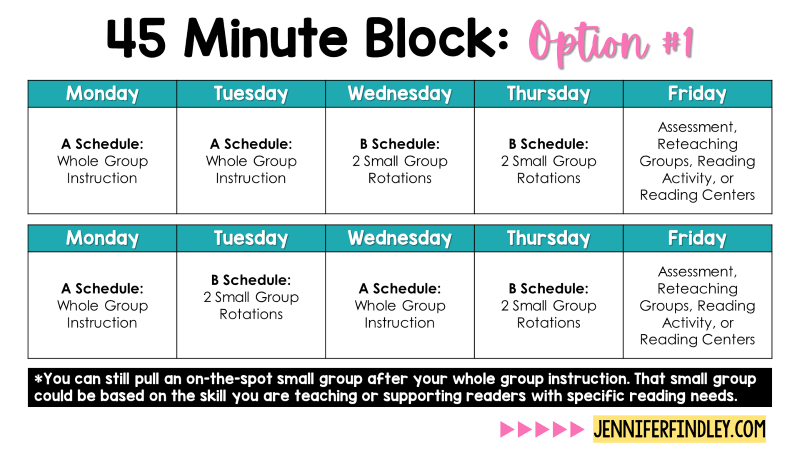
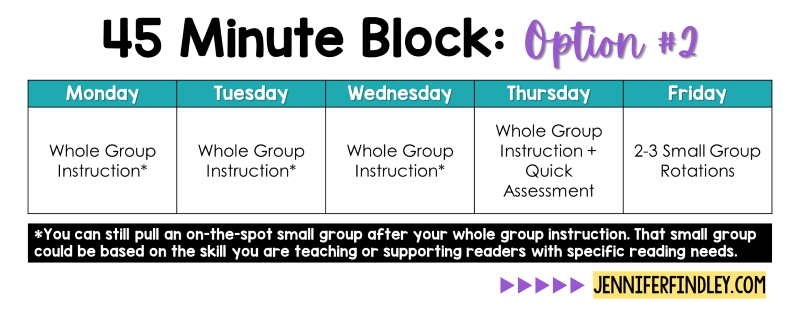

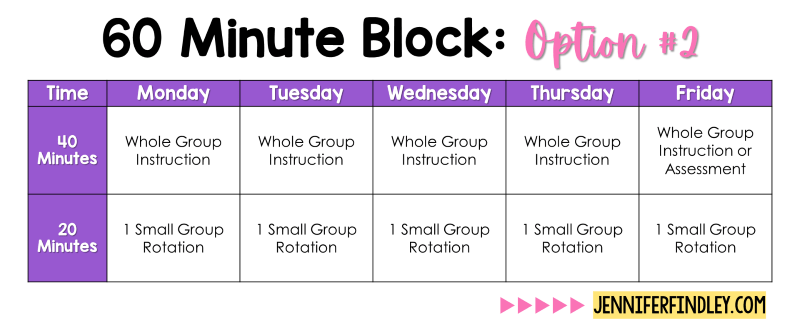
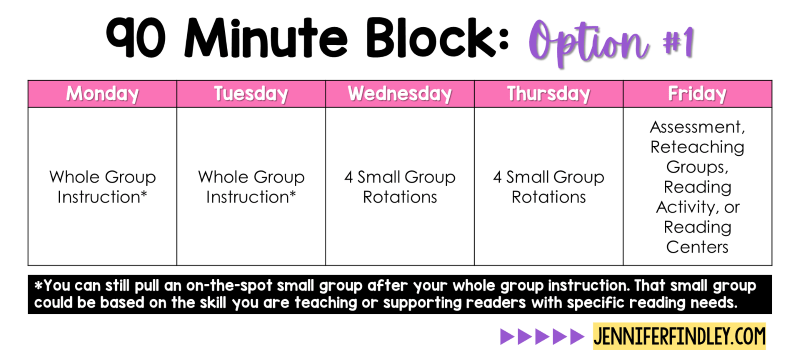
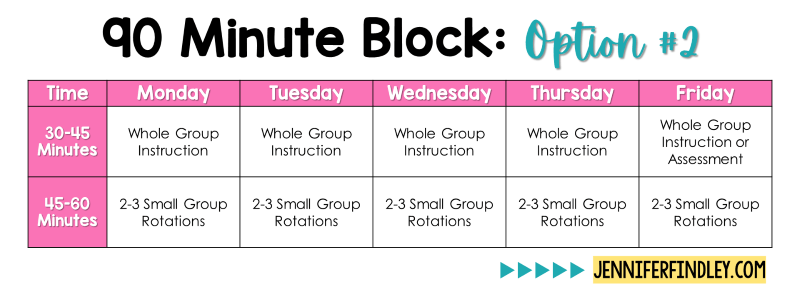
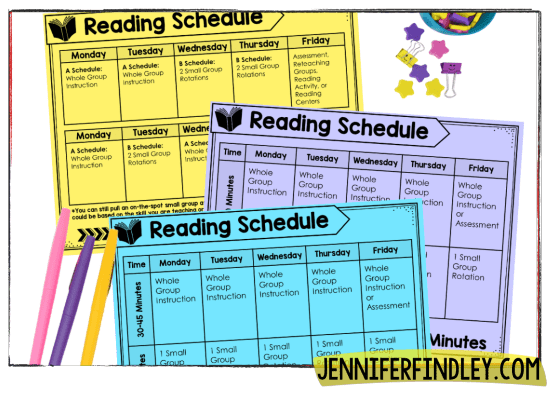
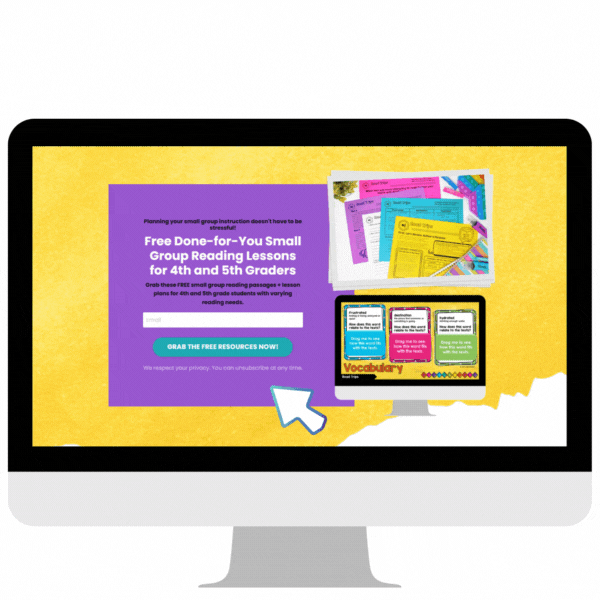
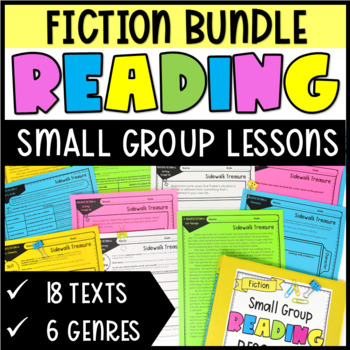
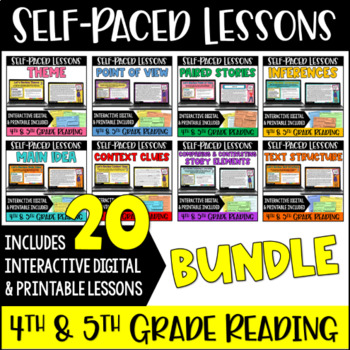









Leave a Comment